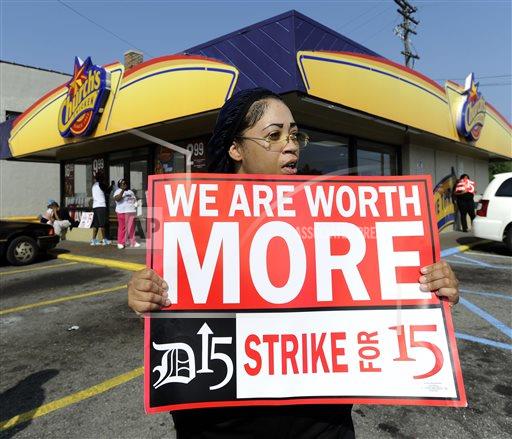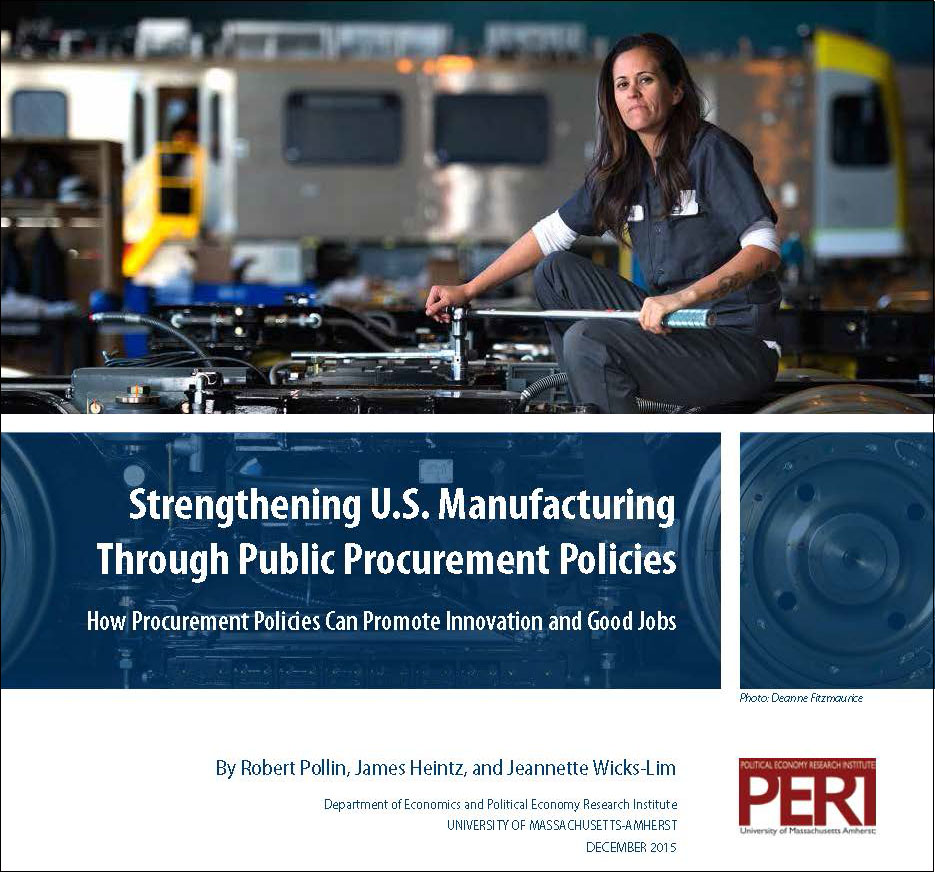
A $15 U.S. Minimum Wage Without Job Losses Can Work
PERI Co-Director Robert Pollin and PERI Assistant Research Professor Jeannette Wicks-Lim have conducted extensive research on the question: What would the impact of a $15 an hour minimum wage examine whether U.S. fast-food businesses could adjust to an increase in the federal minimum wage from its current level of $7.25 per hour to $15 an hour without having to lay off workers. They show how, through a four-year phase-in process, the fast-food industry could adjust to a $15 minimum wage without resorting to any layoffs or even cuts in profitability. Rather, the fast-food industry could fully absorb the cost increases generated by a $15 minimum wage over the four-year period through a combination of turnover reductions along with modest increases in both sales growth and prices.
Democratic presidential candidate Senator Bernie Sanders is calling for raising the federal minimum wage from $7.25 to $15.00 per hour. In a PERI Research Brief, Jeannette Wicks-Lim shows that a $15.00 minimum wage could deliver raises to approximately 65 million workers—more than two-fifths of the U.S. workforce. Her research shows that large percentages of workers from every major demographic group would receive raises from this wage hike. At the same time, since working women, African-Americans, Latinos, and workers from low-income households disproportionately earn near or below $15 an hour, these groups would benefit the most from a $15 minimum wage.
In this commentary in Dollars & Sense, Jeannette Wicks-Lim writes, "The current state of research on this employment question... finds that minimum-wage increases do not produce significant job losses. This then raises an important policy question: Why haven’t there been significant job losses when minimum wages have increased?"
>>Read "A $15 U.S. Minimum Wage: How the Fast-Food Industry Could Adjust Without Shedding Jobs"

Reviving the U.S. Manufacturing Sector
A study by Robert Pollin, James Heintz, and Jeannette Wicks-Lim of PERI advances a policy framework capable of supporting a major revival of the U.S. manufacturing sector. The study focuses on one set of policy tools—U.S. public sector procurement of manufactured goods—to promote growth and expanding job opportunities within one manufacturing industry, the production of railcar transportation equipment. The authors find that significant but straightforward reforms of the “Buy America” program of the Department of Transportation are capable of generating major benefits to domestic railcar manufacturers and workers in this sector.


